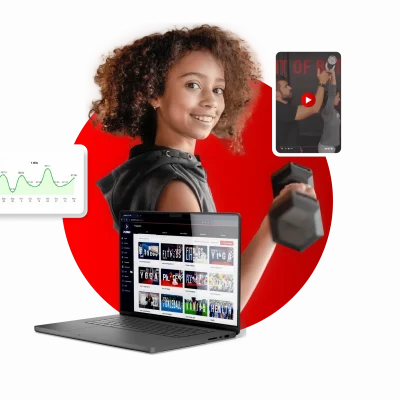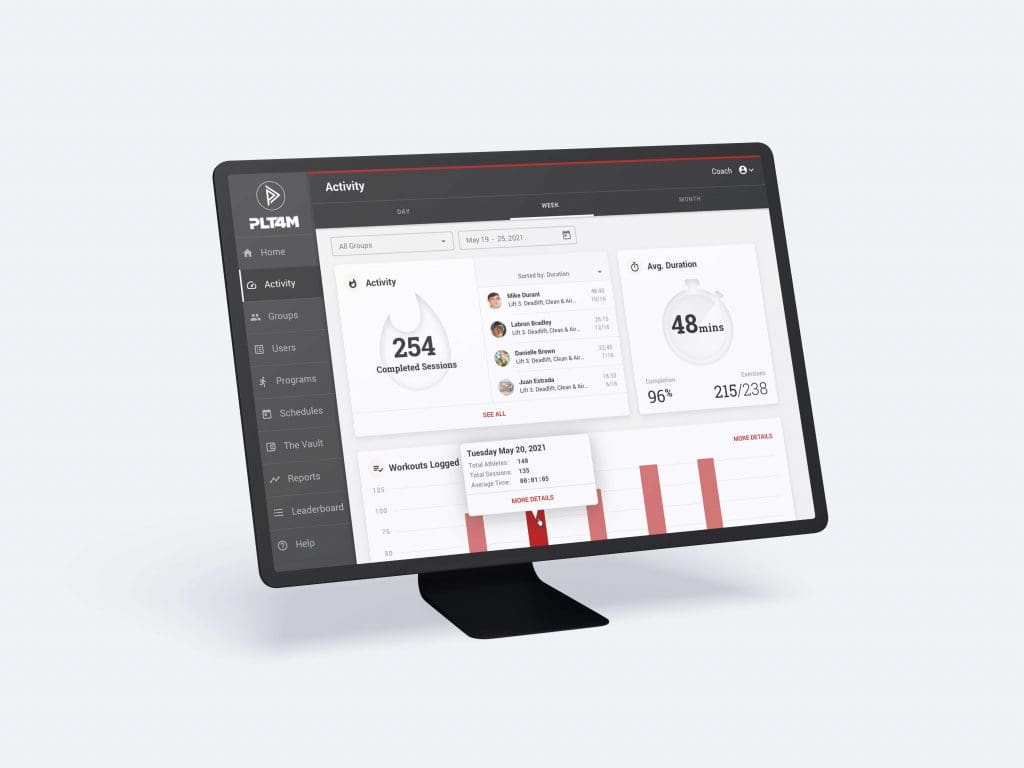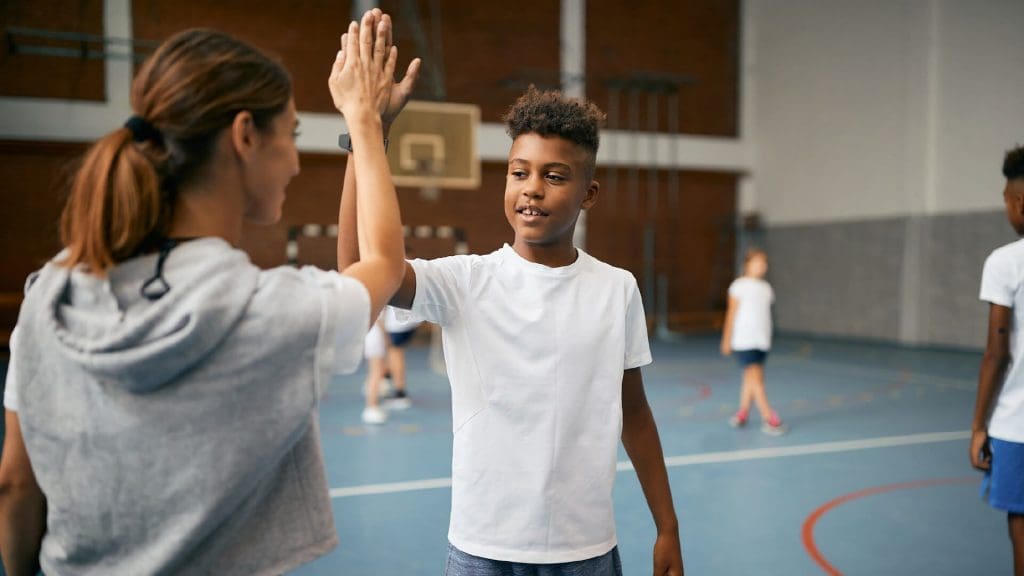Motivating students in physical education has never been more important!
Students face higher levels of anxiety, stress, and depression than ever before. Obesity rates among students and adults have increased over the last two decades.
Physical education is one of the only times many students will have increased physical activity levels throughout their day. Therefore, PE teachers need to find motivational strategies that promote short-term participation in class, but more importantly, long-term intrinsic motivation.
Challenges of motivating students in physical education
Student motivation in any class or subject is challenging. But many students’ perceptions of PE make getting students to participate in physical education classes an even bigger challenge.
Physical activity in pe classes means students have to become vulnerable in front of their peers. It is a natural part of human behavior to avoid embarrassment. So when sweat and the fear of different activities come into play, many students shut down.
In a recent national survey of physical education teachers conducted by PLT4M, 50% of teachers stated that the biggest day-to-day challenge was student motivation/engagement.
Finding the right motivation in physical education classes is where things become tricky!
Extrinsic Motivation vs. Intrinsic Motivation in Physical Education
Extrinsic motivation is when someone is motivated to do something to receive an award or avoid punishment. Intrinsic motivation is when someone is motivated to do something for personal reward or satisfaction.
We often fall into the trap of thinking we need to get students to a point where they have the self-motivation to exercise and work out independently, i.e.: intrinsic motivation. But even adults still tap into extrinsic motivation of things like daily awards from things like apple watches or other apps that monitor activity levels give our trophies.
So while we often compare these two types of motivation and debate the merits of both, pe classes are best suited to strike a balance.
8 Tips & Strategies for Motivating Students In Physical Education
PE teachers have always looked to find unique ways to inspire and engage their students. Molly Collins, a PE teacher at Pennfield High School in Michigan, has always looked to stay cutting edge when motivating her students.
In a recent PLT4M webinar, Molly broke down eight tips and strategies to inspire student motivation in pe classes. While Molly certainly doesn’t claim to have all the answers, she does provide great insights and ideas and has documented many of these strategies via social media. Let’s look at some of the strategies she is using in class throughout the school year.
1: Music Choice
When was the last time you personally did a workout in silence? Music can provide an extra boost of energy for any physical activity.
Allowing different students the chance to play DJ for the day can create excitement and engagement. Better yet, it opens up new opportunities for connection and conversation around music. It doesn’t always have to be about physical education! Creating different areas for students to talk with one another and with you as a teacher can be the reason why a student looks forward to class.
And if you are nervous about what type of music might end up on the speaker, be proactive and make it so students have to prepare playlists in advance. Doing so will allow you to get appropriate playlists with which students can still connect.
2: Partner Workouts
As many PE classes shift to a fitness-based approach, it doesn’t mean that everyone needs to be isolated and on their own. Partner workouts are a great way to have students work with their peers during class.
Like with music, partner workouts can boost energy in a class when students become teammates. As they work together, students are encouraged to support and hold their peers accountable in a productive way. This helps to create and form connections among students.
3: Game Day
And just because PE teachers are embracing a fitness-based curriculum, it doesn’t mean that games have to disappear. It is important to remember that there is still a group of students within your pe classes that look forward to fun games and activities in PE.
This group is motivated by the idea of games and friendly competition that comes from physical education classes taking on different types of games. It doesn’t have to be every day, but things like floor hockey, basketball, soccer, and even medball tic tac toe!
4: Highlight Your Students
When a student feels recognized, they feel empowered. And while PE has often been a place where the most ‘athletic’ students often get recognition, this does not always have to be the case.
One simple way to highlight a student is to have them demo a movement for an in-class example. You can pull out different students who might not always be the strongest or fastest. For example, maybe you have a student with excellent squat form and can showcase this in front of the class.
Another great way to get more students involved is to invite someone working hard to have them be the warm-up leader for the day. Because this usually is the most straightforward part of the workout or class, almost any student can be the leader!
Outside of just in-class ‘shoutouts,’ you can also work to shout out students via social media or on a bulletin board. Things like a student of the week for PE have become more popular as it creates a place to recognize students amongst their peers that might not always get the same attention as the star-studded athlete.
Want to Boost Student Engagement?
Schedule a 15-Minute demo to learn how PE teachers are ushering in a new age of Physical Education with Fitness and Technology!

5: Data Insights
One of the most powerful ways for students to be engaged is to know they are making improvements and progress. But when it comes to living a healthy lifestyle, it can be hard to see immediate results.
With apps like PLT4M, students can start to see their progress in real time. And it is all relative to the individual. A student is far more likely to be motivated when they hear and see they have made 25% individual improvement, rather than in the 25 percentile compared to their peers.
When students can see their progress charted and mapped out, it can inspire them to continue putting in the effort.

6: Performance Rewards
While you could study all sorts of motivational strategies for pe classes, prizes and awards are one of the easiest ways to motivate students. And these don’t have to break the bank! Never underestimate the power of a free t-shirt. Often you can get access to some apparel or clothing from a local organization or booster club.
7: Social Media
Connect with your students on their level! While we might want to avoid social media at all costs, students come having seen things on social media that they might be curious about or want to try. Creating a space where these social media trends can be discussed safely can go a long way.
And if you find a Tik Tok challenge that is safe and appropriate, give it a try. If you expect your students to be open to new things, you should be too!
8: Workout With Your Students
If possible, join in on the action! Of course, not every teacher can do this, and that is okay. But if you can, joining students for a workout every once and while can again show them your passion and that you care. It might feel silly, but students are drawn to their teacher participating in class.
Key Takeaways to Motivating Students In Physical Education
It is important to remember that not everyone will love physical education classes! And even as adults, we struggle to always want to live an active lifestyle.
But, finding the right motivational strategies for your school and physical education classes can make the difference! It might only be with a few students, but even just taking small actions to get more students engaged and involved is still a step in the right direction.
And as you slowly start to change students’ perceptions of pe classes, they might pick up an activity that they like along the way!
What is Self Determination Theory?
Self Determination Theory is one of the most widely referenced motivational theories in physical education.
Self-Determination Theory was first introduced in 1980 (Deci & Ryan, 1980). Deci and Ryan (1985, 2000) postulate that SDT is a motivational process in which an individual self-regulates their action depending on the degree of their need’s satisfaction.







